If you want to start cooking perfect dumplings, you’re going to need to learn how to steam in a bamboo steamer.
Steaming is a classic method of preparing dumplings, and a bamboo steamer is a traditional vessel for doing it. Once you’ve learned how to steam in a bamboo steamer, though, dumplings aren’t the only dish you can prepare: you can also use it to healthfully steam vegetables, meat, and seafood.
In this post, we’ll talk about the basic method of steaming in a bamboo steamer, including equipment and basic techniques that can be applied to a number of foods, from those delicious homemade dumplings to meat, seafood and vegetables, too.
A Note on the Equipment:
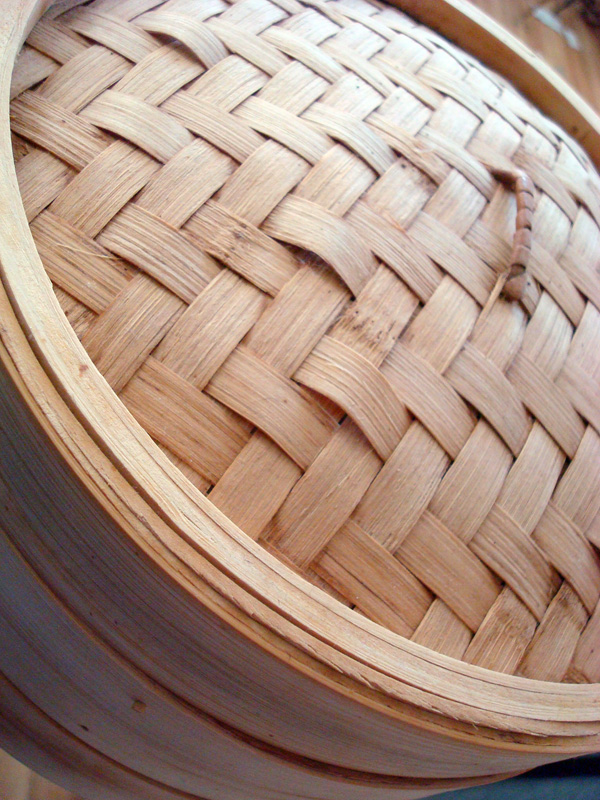
First, you’ll need a bamboo steamer. They’re readily available in Asian markets, cooking supply stores, and even many gourmet grocery stores. You can find a good steamer for under $20. Many will have various “tiers,” so you can cook different dishes simultaneously.
You will also need a vessel to hold the water with which you will steam. You’ll need a pot that will fit the steamer snugly and keep it hovering above the water. A wok is the ideal tool for steaming — its curved shape that narrows toward the bottom can hold water, but can also suspend the steamer above it without touching the water. A pan or skillet can be used too, but basically you don’t want a precarious placement where the steamer will top over. Ideally, your steamer hovers above the water. But if there is liquid touching the steamer, make sure that the portion where the food is, sits above the liquid line.
How to Steam in a Bamboo Steamer:
Step 1:
Line the bottom of the basket(s). You want to do this to create a divider between food and basket, so it won’t stick. Cabbage or lettuce leaves are common liners.
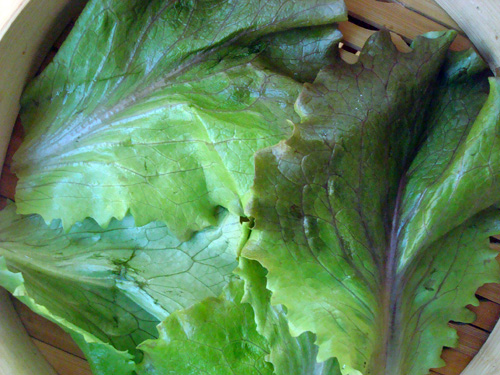
Although cheap and easy to obtain, cabbage and lettuce do not impart much flavor. Consider adding banana leaves, corn husks or grape leaves to impart a flavor to what you’re cooking.
Now, lay your food on top of the leaves, in a single layer. Foods like dumplings shouldn’t be jammed together. Lightly touching is fine, but make sure they have space so they won’t stick together once cooked.
Step 2:
Find a pot that your steamer will fit in snugly, or where it can hover over the pot. A wok is ideal, but you can also use a large pot. Fill the pot with about 2 inches of water, or you can also fill with a broth to scent whatever you’re cooking.

Step 3:
Fill the wok or pan with 2 inches of water. On medium heat, without the steamer on top, or any sort of cover, bring the water or liquid to a simmer. Do not let it come to a boil.
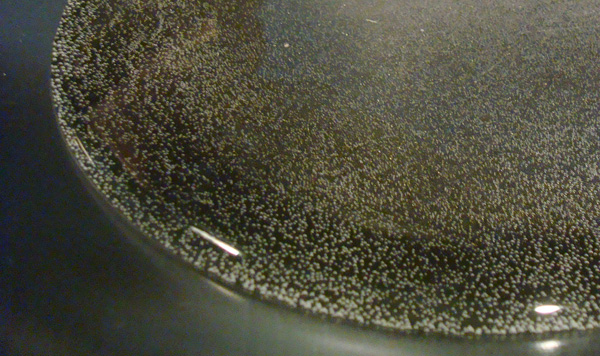
Step 4:
Once the water has reached the simmering point, place the steamer over or in the pot. Make sure the lid is on. Let the simmering water warm the contents of the basket, checking the progress occasionally.
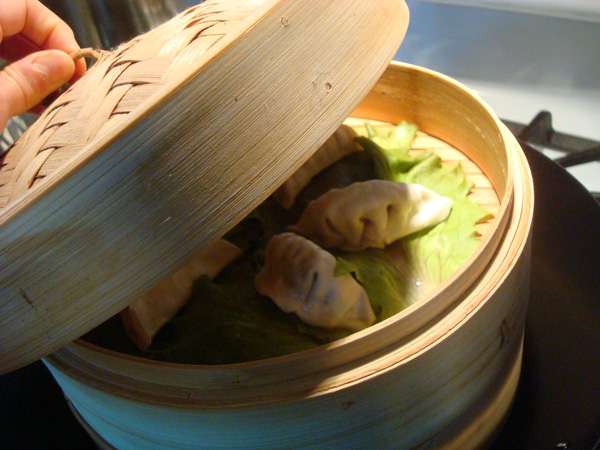
The leaves of your “liner” will start to wilt — that is just fine.
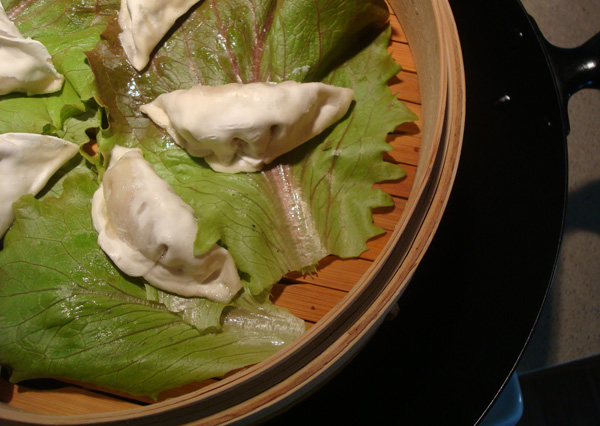
It will start to get steamy after a few minutes.
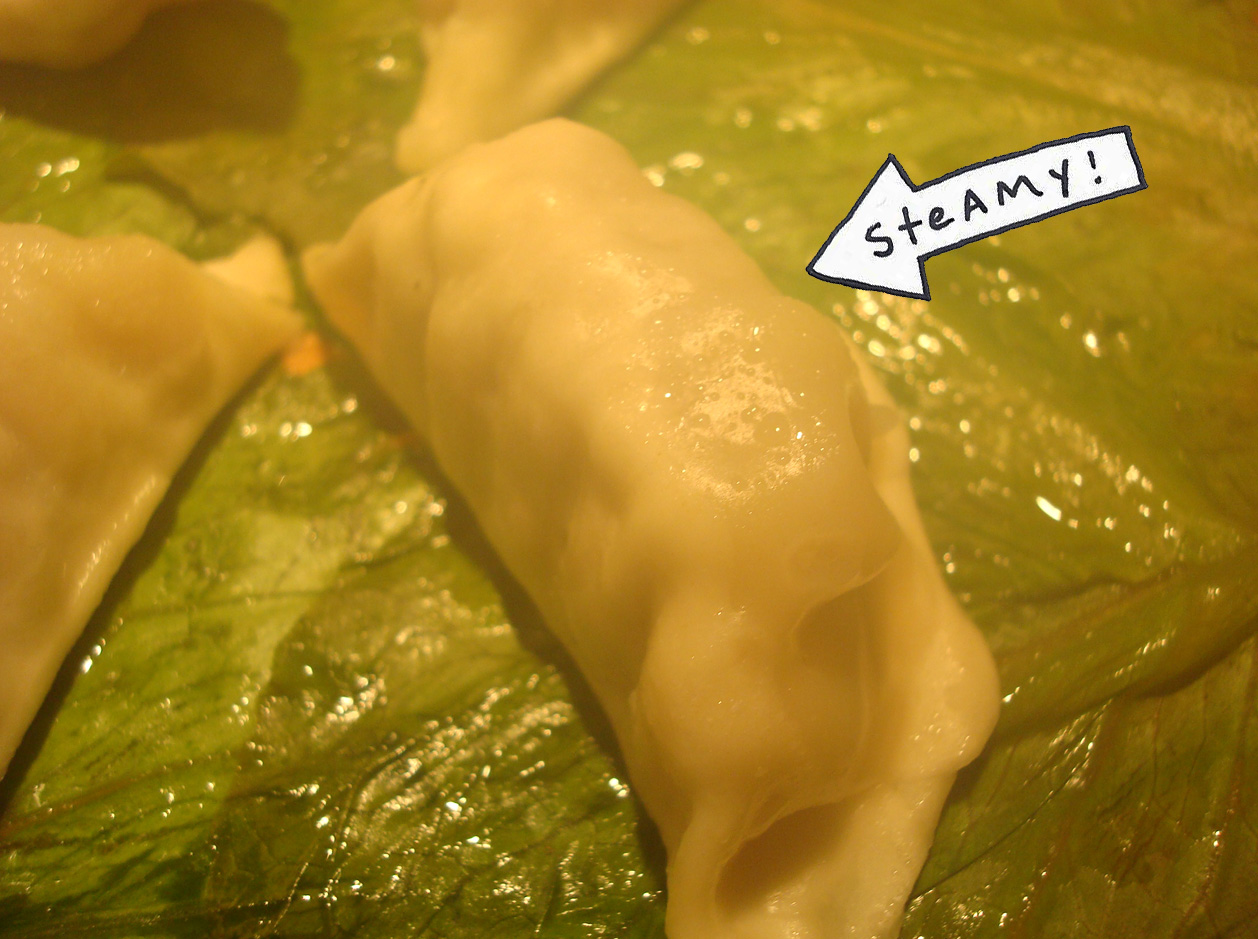
Continue cooking until the food has cooked through; this will vary depending on what you are cooking. These pork and vegetable dumplings, for instance, took about 15 minutes on medium simmering heat.
Note: Keep an eye on the water levels, as you don’t want the water to run dry. If you feel like it might be running low, gently lift the steamer to check. Even though the sides of the steamer may not be hot, use gloves because the steam that rises can be very hot as you lift it. You can add more water if needed, and then place the steamer back on the wok.
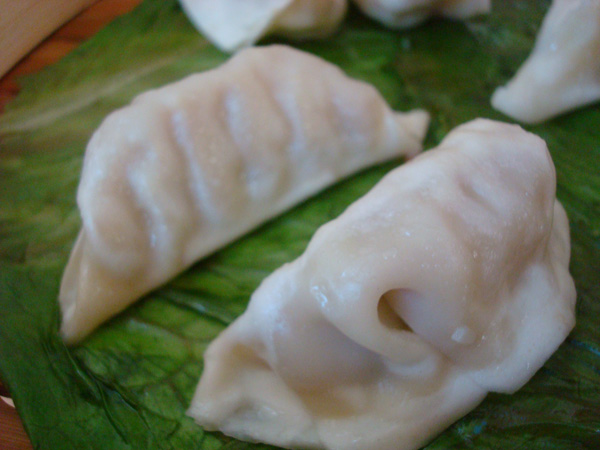
To remove, use tongs or a spoon, as the food in the steamer will be hot, and the steam rising will be, too.

Foods You Can Cook in a Bamboo Steamer:
While this information will offer a broad overview, always refer to specific recipe directions to ensure cooking success.
Dumplings
Prepare the dumplings as specified in your recipe; you can steam them after assembling, or make them in advance and refrigerate them. Follow the steps above to prepare your bamboo steamer.
Steam for 15 to 20 minutes. When dumplings are cooked, remove from the steamer and serve with whatever dipping sauces you’d like.

Photo via Andrea Nguyen
Dumpling Variation:
If you prefer your dumplings crispy, you can transfer the finished dumplings to a frying pan and fry with a couple of tablespoons of oil on high heat until lightly browned and crispy on the sides and bottom. Since they are already cooked, you only need to heat very briefly — so keep a close eye on them.
Dumplings can be steamed a day ahead; store, covered, in the refrigerator, and then re-steam for 5 minutes before serving. They can also be made ahead and frozen, but let them thaw to room temperature before re-steaming.
Creating perfect dumplings is an art that can be learned and perfected with the Crafty class Favorite Asian Dumplings From Scratch.
In the course, you’ll learn how to make some of the most popular dumplings from China, Japan, and Korea as award-winning cookbook author Andrea Nguyen guides you through five approachable recipes she developed just for home cooks. You’ll learn to work with store-bought wrappers and to make your own dough, and then you’ll learn how to fill it with mixtures from shrimp and scallion to pork and shiitake mushrooms, and even and kimchi and tofu. You’ll even learn how to make dipping sauces to accompany the tasty treats.
Meats
Steaming can be a fantastic way to maintain moisture in meat cuts. However, unlike braising, steaming will do little to change the texture of meat. So it is not suggested for tougher cuts of meat but is more favored for tender cuts of meat. Often, an inner container will be used as a little steam chamber to allow it to cook most efficiently.
Seafood
It’s easy to steam seafood in your bamboo steamer. For fish, steam until it is tender enough to flake apart with a fork; shrimp will indicate doneness by turning pinkish in color.
Poultry
Poultry is well-suited to steaming. To add flavor, marinate the poultry before steaming, or add a flavorful broth instead of water to the pan as your steaming liquid. Small incisions in the top and bottom of thicker cuts will ensure even cooking.
Vegetables
Steaming helps vegetables maintain nutrients and adds a wonderful softened-but-still-crunchy texture. Steaming times will vary depending on the size and density of the vegetables. For instance, carrots would require more time than finely sliced broccoli. When you can easily slice a vegetable at its thickest part, they are steamed to perfection.

Share tips, start a discussion or ask one of our experts or other students a question.
No Responses to “Dreamy Steamed Dumplings and More: How to Steam in a Bamboo Steamer”